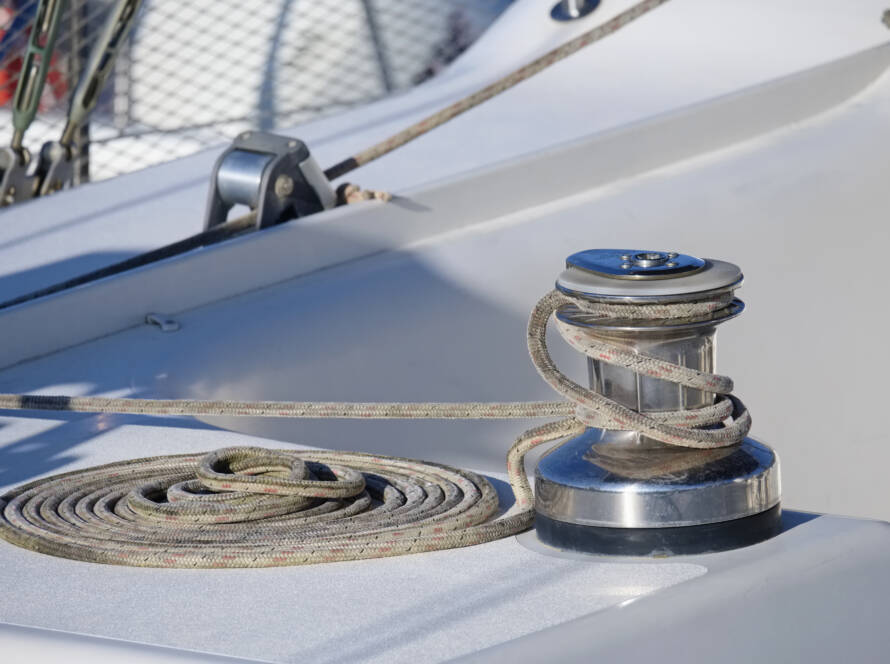The maritime industry is known for its constant innovation and reliance on high-quality, durable
equipment. From ships to yachts, every vessel depends on reliable tools and machinery to ensure
optimal performance. While brand-new equipment is often the go-to choice, second-hand
equipment is becoming an increasingly popular option for many businesses and individual owners
in the maritime sector. In this blog, we explore the benefits, challenges, and key considerations
when opting for second-hand equipment.
Why Choose Second-Hand Equipment?
1. Cost Savings: One of the primary reasons for considering second-hand equipment
is the cost savings. Maritime businesses and yacht owners can save a significant amount of
money by purchasing gently used equipment rather than new. In many cases, second-hand
equipment can be just as effective and reliable as new items but at a fraction of the price.
2. Sustainability: The maritime industry is becoming more aware of the need to
reduce waste and promote sustainability. Choosing second-hand equipment helps minimize the
environmental impact of manufacturing new products. By reusing and recycling equipment,
companies can contribute to a more sustainable maritime industry while still maintaining
operational efficiency.
3. Immediate Availability: New equipment often comes with long lead times,
especially when custom specifications are involved. Second-hand equipment, on the other hand,
is often available for immediate purchase. This can be especially helpful in situations where a
vessel needs urgent repairs or replacements to avoid costly downtime.
4. Access to High-Quality Brands at a Lower Price: Second-hand equipment often
includes items from well-known, trusted brands that are no longer available in the market. Buying
used equipment from reputable manufacturers allows maritime businesses and yacht owners to
enjoy high-quality equipment at a reduced cost.
Types of Second-Hand Equipment in the Maritime Industry
1. Engines and Power Systems: Marine engines are among the most expensive
components of a vessel. Many businesses opt for second-hand engines that have been carefully
maintained and refurbished to extend their lifespan. These engines can provide the same level of
performance as new ones, making them an excellent choice for those on a budget.
2. Navigation and Communication Equipment: Modern navigation and communication
systems are essential for safe and efficient operation at sea. Second-hand GPS, radar systems,
and communication devices can be a cost-effective way to equip a vessel without compromising
safety or functionality.
3. Deck Equipment: Deck machinery such as winches, cranes, and anchors can be
expensive when purchased new. Second-hand equipment from reputable sellers can provide the
same functionality and reliability, often at a fraction of the price.
4. HVAC and Cooling Systems: Heating, ventilation, and air conditioning (HVAC)
systems are vital for comfort and safety onboard. Second-hand HVAC units, cooling
compressors, and other related equipment can be a practical solution when replacements are
needed quickly and affordably.
5. Spare Parts and Components: Many companies and private yacht owners turn to
second-hand spare parts to save costs. Items such as pumps, valves, electrical components, and
other smaller machinery parts can be sourced from trusted second-hand suppliers. These parts
are often refurbished to meet the original manufacturer’s standards, making them a reliable choice
for replacements.
Challenges of Second-Hand Equipment
While second-hand equipment offers many benefits, there are some challenges to consider:
1. Potential Wear and Tear: Even with careful maintenance, second-hand equipment
may show signs of wear and tear. It’s crucial to evaluate the condition of the equipment before
purchasing it, ensuring that it will still be functional and reliable in the long term.
2. Limited Warranty: New equipment typically comes with warranties that provide
peace of mind in case something goes wrong. Second-hand equipment, however, may not come
with the same level of warranty, or it might have limited coverage. Buyers should thoroughly
check the warranty status and consider additional maintenance plans.
3. Availability of Parts and Support: Depending on the age of the equipment, finding
spare parts or support services can sometimes be more difficult. It’s essential to ensure that the
second-hand equipment can still be serviced and maintained efficiently before making a
purchase.
4. Risk of Counterfeit or Substandard Goods: The second-hand market, like any
other, can have its fair share of counterfeit or substandard products. It’s essential to source
equipment from trusted dealers and ensure that the items are properly inspected, refurbished, and
certified.
How to Source Quality Second-Hand Equipment
To ensure that second-hand equipment meets high standards, it’s important to partner with
reputable suppliers or dealers who specialize in marine equipment. Look for companies with a
strong track record of quality, proper certification, and customer reviews. Many dealers offer
warranties or guarantees on their second-hand products, providing additional assurance to
buyers.
It’s also wise to inspect the equipment or request a third-party inspection before making a
purchase. This can help ensure that the equipment is in good condition and free of defects.
Additionally, checking for any available service records or history of repairs can help you make an
informed decision.
Conclusion
The trend of choosing second-hand equipment in the maritime industry is growing as businesses
and individual owners look for cost-effective, sustainable, and reliable solutions. With careful
inspection and sourcing from reputable dealers, second-hand equipment can offer many benefits,
including cost savings, immediate availability, and access to high-quality brands. By taking the
time to properly evaluate the condition and ensure the equipment is fit for use, second-hand
equipment can be an excellent choice for maintaining operational efficiency without breaking the
bank.



